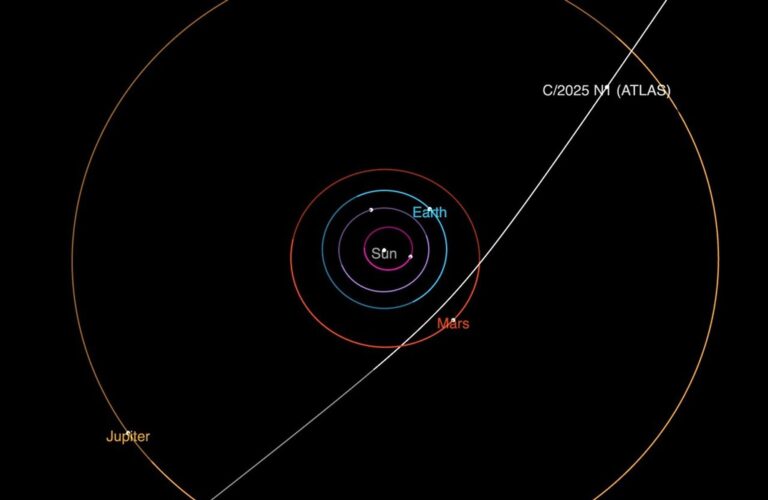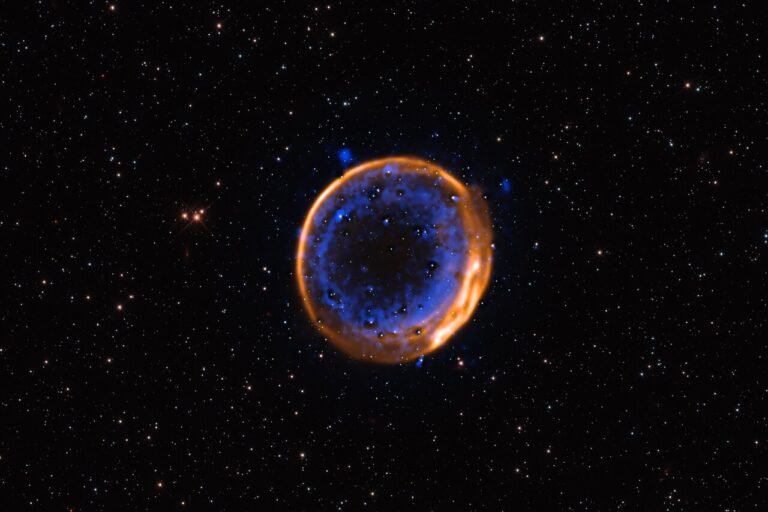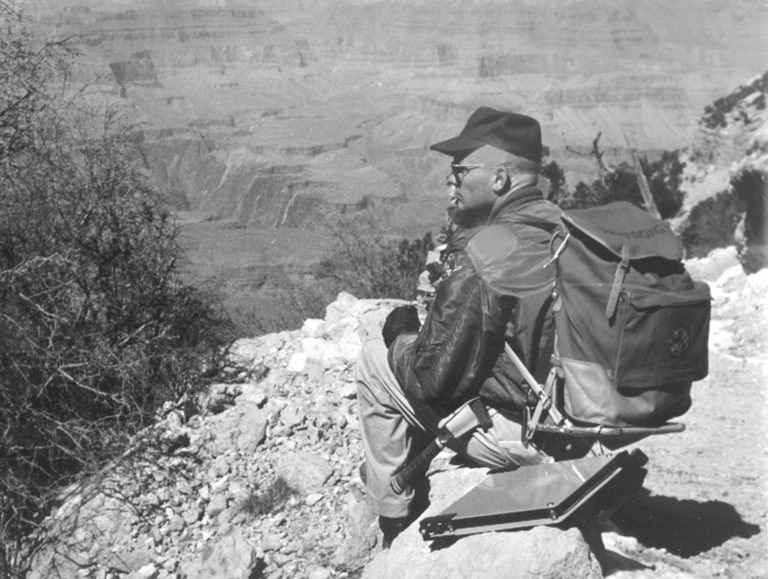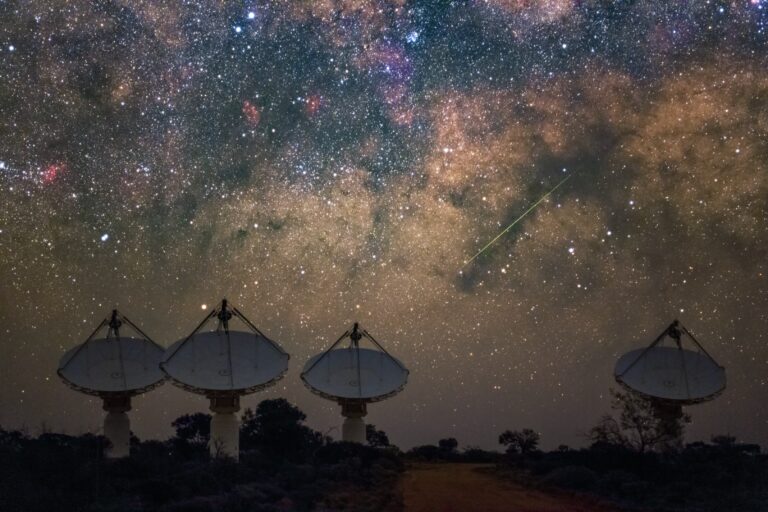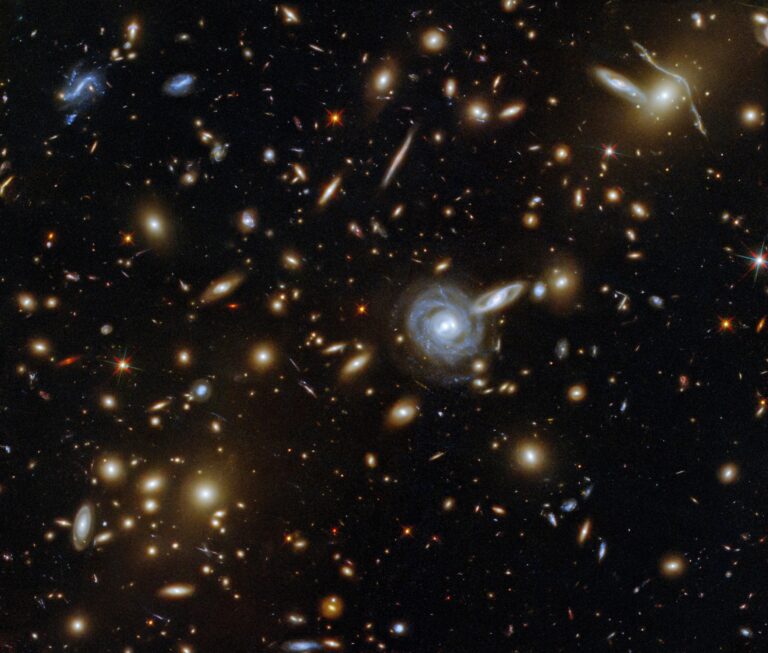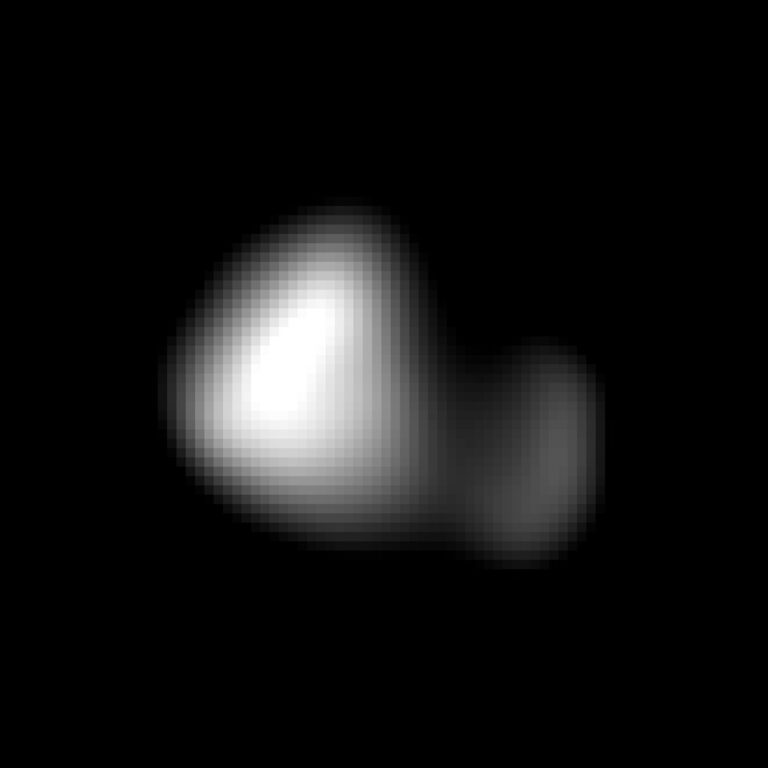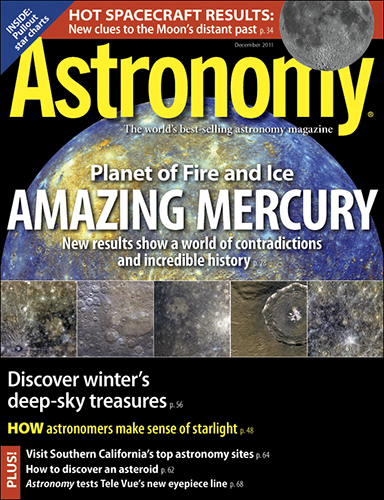
Key Takeaways:
WAUKESHA, Wis. — At 9:00 p.m. EDT March 17, man’s exploration of the solar system reached a new milestone: MESSENGER became the first spacecraft to orbit Mercury. After a 4.9-billion-mile (7.9 billion kilometers) journey, NASA’s latest planetary probe is spending a year exploring the innermost planet. But it didn’t take a year for the mission to produce some unexpected results; surprising findings came just 6 months later.In “Mercury: Planet of fire and ice,” Senior Editor Richard Talcott explores the fantastic photographs the mission is returning of the north and south poles as well as its first two shocking discoveries: Mercury’s surface composition differs significantly from what scientists expected, and the planet’s magnetic field doesn’t line up with its equator. “The findings cast doubt on some of the ideas proposed to explain Mercury’s origin,” Talcott writes. Only one theory, which involves a collision with an equally large body, remains on firm footing.To learn more about these MESSENGER discoveries and the spacecraft’s other finders, including the potential for water ice on Mercury, pick up the December issue of Astronomy, on newsstands November 1.
“New clues to the Moon’s distant past”
Scientists have been studying Earth’s only natural satellite up close since 1959 and thought they had developed a thorough understanding of its formation and current characteristics. But two probes launched in 2009 to examine the Moon in unprecedented detail are rewriting lunar history. In “New clues to the Moon’s distant past,” scientist Peter H. Schultz explains how these spacecraft have uncovered a shrinking, water-rich world beset by extreme conditions. Astronomy textbooks and curricula will never be the same.
“Wander winter’s deep sky”
Ever read about some interesting deep-sky objects but don’t know what you should target through your specific telescope? Wonder no more about the winter months’ best with Senior Editor Michael E. Bakich’s “Wander winter’s deep sky.” Bakich breaks down the targets by telescope aperture, so you know what objects are within your scope’s range. Anything visible through telescopes smaller than yours is a definite, while anything visible through larger instruments is a challenge to test the limits of your equipment. It’s a must-have guide for the season’s cold nights.
“Discover an asteroid!”
Citizen science is a popular pastime among amateur astronomers these days. But with all the professional all-sky surveys currently going on, is it still possible to make a significant discovery of a solar system object like an asteroid? With the right — and now rentable — equipment and a solid plan, Stephen G. Cullen asserts the answer is still “yes” in “Discover an asteroid!” To prove it, the author takes readers on a one-week observing run using a remote 24-inch telescope in Rodeo, New Mexico. The result: 27 minor planets spotted, 11 of them new.
December sky events visible without optical aid
- December 10 — Observers in western North America, Australia, Asia, and parts of Europe will witness a total eclipse of the Moon.
- December 22 — Mercury reaches greatest western elongation, when it will shine at magnitude –0.4 low in the southeast before dawn.
- December 23 — The Ursid meteor shower peaks under moonless skies.
- December 27 — A waxing crescent Moon passes 6° north of brilliant Venus.
Also in the December 2011 Astronomy
- “How astronomers make sense of starlight” — Scientists learn what objects are made of, how hot they are, and even how fast the universe is expanding by analyzing their light.
- “Visit Southern California’s top astronomy sites” — From the discovery that the universe is expanding to building the next-generation Mars rover, Southern California harbors must-see locations for anyone interested in astronomy.
- “Astronomy tests Tele Vue’s new eyepiece line” — Delos eyepieces feature generous eye relief, a wide field, and tack-sharp optics.
- “The Sky this Month” — Exclusive pullout star charts will guide you through October’s night sky.
- The December also includes Astro News, Bob Berman’s Strange Universe, Glenn Chaple’s Observing Basics, Stephen James O’Meara’s Secret Sky, David H. Levy’s Evening Stars, Tony Hallas’ Imaging the Cosmos, Ask Astro, New Products, and Reader Gallery.



